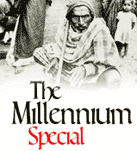The ISRO chairman on the 10 challenges faced by the Indian space programme
Any space programme, by virtue of its very nature, is full of challenge.
Developing satellites, designing their payloads and operationalising launch
vehicles, are all difficult tasks. So is establishing facilities for
testing on the ground, or operating satellites once they are in orbit. If
you look at it that way, every space event is fraught with tension and is a
challenge. However, here is my list of what I perceive as the 10 greatest
challenges faced by the Indian space programme…
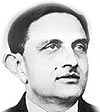 1. Space without Vikram Sarabhai: The Indian Space Research Organisation was set up in November 1969 under the Department of Atomic Energy. Dr Sarabhai, chairman of the Atomic Energy Commission, personally planned and implemented all the early parts of the space programme, like developing rockets and satellites, demonstrating space applications and space science.
1. Space without Vikram Sarabhai: The Indian Space Research Organisation was set up in November 1969 under the Department of Atomic Energy. Dr Sarabhai, chairman of the Atomic Energy Commission, personally planned and implemented all the early parts of the space programme, like developing rockets and satellites, demonstrating space applications and space science.
When he died suddenly in 1971, the others in the programme,
most of whom had been hand-picked by him, were left trying to make his
dreams and vision come true. This was a great challenge, but it was done
over the next three decades.
 2. Designing the Aryabhatta: Developing Aryabhatta, the very first Indian satellite, from scratch with absolutely no infrastructure, was one of the toughest things that Indian space scientists have ever done. New scientists were hired, trained, facilities built up, all in a very short time, and
Aryabhatta was launched in April 1975 on the Intercosmos rocket of the then
USSR.
2. Designing the Aryabhatta: Developing Aryabhatta, the very first Indian satellite, from scratch with absolutely no infrastructure, was one of the toughest things that Indian space scientists have ever done. New scientists were hired, trained, facilities built up, all in a very short time, and
Aryabhatta was launched in April 1975 on the Intercosmos rocket of the then
USSR.
3. Making Bhaskara beam television pictures: Bhaskara-1, an experimental remote sensing satellite, was launched in June 1979 with a television camera on board. However, a high voltage terminal employed in the instrument arced, due to suspected outgassing (evaporation of certain compounds in high vacuum) and it looked as if the camera would never be usable. But space scientists decided to wait for 8, 9 months for the gases to dissipate, and the camera was finally switched on in 1980…and it worked.
The challenge here was in taking decisions about the environment inside a satellite in orbit 350 km above earth.
4. Designing APPLE and making it work: When the European Space Agency offered to launch an Indian satellite, free of cost, on its third developmental flight of its launcher Ariane, ISRO accepted with alacrity, and found itself having to build a 3-axis stabilised experimental
communication satellite in less than three years.
The satellite also had to have its own apogee motor to take it from geostationery transfer orbit to geostationery orbit. We modified the fourth stage of SLV-3, India's first satellite launch vehicle which was still being developed, and modified it to become the boost motor for APPLE.
Our problems did not end with the launch of APPLE: one of its solar panels did not work, once it was in orbit. We had to make the satellite work with only one panel, under severe thermal and control constraints, and we succeeded: APPLE was used to conduct several communication application experiments for about three years.
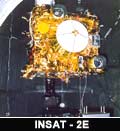 5. Establishing the INSAT system: We got the first generation of the INSAT series of satellites from the US, but two of the four satellites (INSAT-1A and INSAT-1C) failed prematurely. So ISRO had to put the first two indigenously-built satellites of the next generation into operation,
instead of just using them as test satellites, as originally intended.
5. Establishing the INSAT system: We got the first generation of the INSAT series of satellites from the US, but two of the four satellites (INSAT-1A and INSAT-1C) failed prematurely. So ISRO had to put the first two indigenously-built satellites of the next generation into operation,
instead of just using them as test satellites, as originally intended.
However, they worked well. Then, INSAT-2D failed, and had to be replaced by
INSAT-2E, which again was a success, and ISRO even leased 2E's transponders
out to INTELSAT.
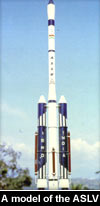 6. Overcoming 2 ASLV failures: Immediately after developing its first launch vehicle, the SLV-3, successfully, ISRO added two first stage motor strap ons and augmented it to make it the Augmented Satellite Launch Vehicle. However, its first flight failed when the first stage did not
catch on after the strap on stage burnt out. No data was received to
evaluate performances.
6. Overcoming 2 ASLV failures: Immediately after developing its first launch vehicle, the SLV-3, successfully, ISRO added two first stage motor strap ons and augmented it to make it the Augmented Satellite Launch Vehicle. However, its first flight failed when the first stage did not
catch on after the strap on stage burnt out. No data was received to
evaluate performances.
The second flight, 15 months later, also failed, but gave some feedback about flaws in launch vehicle design. This enabled space scientists to correct the design and launch both subsequent ASLVs successfully, as well as its next generation, the Polar Satellite Launch Vehicle.
 7. Making the PSLV work: The PSLV is now a successful launch vehicle, having even placed three satellites in orbit in its last launch last May. But operationalising it was a big challenge as it is a 293 tonne, 44 metre tall vehicle with solid and liquid propulsion stages, employing closed loop
guidance. Besides, its trajectory design involved a yaw manoeuvre to avoid
land masses in the flight path.
7. Making the PSLV work: The PSLV is now a successful launch vehicle, having even placed three satellites in orbit in its last launch last May. But operationalising it was a big challenge as it is a 293 tonne, 44 metre tall vehicle with solid and liquid propulsion stages, employing closed loop
guidance. Besides, its trajectory design involved a yaw manoeuvre to avoid
land masses in the flight path.
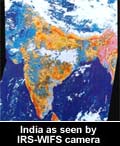 8. Developing world-class remote sensing satellites: Indian remote sensing satellites are now acknowledged as among the best in the world. But getting there was an uphill task, as was the development of a strong user base for remote sensing applications that now cover several areas.
Developing the first Indian Remote Sensing Satellite (IRS-1A), with two
cameras operating in four spectral bands, and having the advanced Charge
Coupling Device technology for the camera.
8. Developing world-class remote sensing satellites: Indian remote sensing satellites are now acknowledged as among the best in the world. But getting there was an uphill task, as was the development of a strong user base for remote sensing applications that now cover several areas.
Developing the first Indian Remote Sensing Satellite (IRS-1A), with two
cameras operating in four spectral bands, and having the advanced Charge
Coupling Device technology for the camera.
 9. Being refused cryogenic technology know-how: When the Russian space agency Glavkosmos signed a contract to supply a cryogenic upper stage for ISRO's Geosynchronous Satellite Launch Vehicle, it also promised to provide the technology behind this engine to enable India to do it
indigenously in the future.
9. Being refused cryogenic technology know-how: When the Russian space agency Glavkosmos signed a contract to supply a cryogenic upper stage for ISRO's Geosynchronous Satellite Launch Vehicle, it also promised to provide the technology behind this engine to enable India to do it
indigenously in the future.
But, as we all know, Glavkosmos went back on its word, under pressure from USA, and we were forced to suddenly start developing our own cryogenic technology completely on our own. We did it, and are about to have our first developmental test of it early in the millennium.
10. Raising the orbit of IRS-1D: In September 1997, we launched our own satellite into orbit ourselves from our own launcher for the first time. But the satellite was placed in a far lower orbit than intended. So we had to do a careful, well-planned orbit raising manoeuvre over a period of three
weeks to place it in the operational orbit of 737 km X 821 km without
compromising its design life.
Now this satellite is the mainstay of the Indian remote sensing system and provides useful data to the whole world.
Photographs: Courtesy ISRO
As told to M D Riti
Tell us what do you think of this list?
